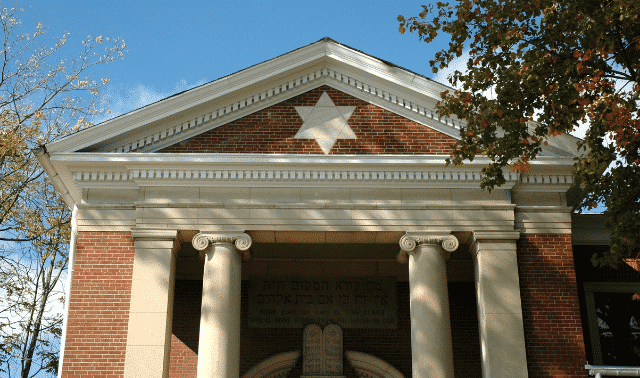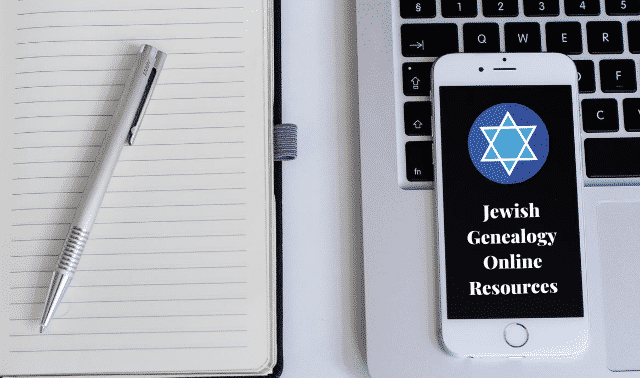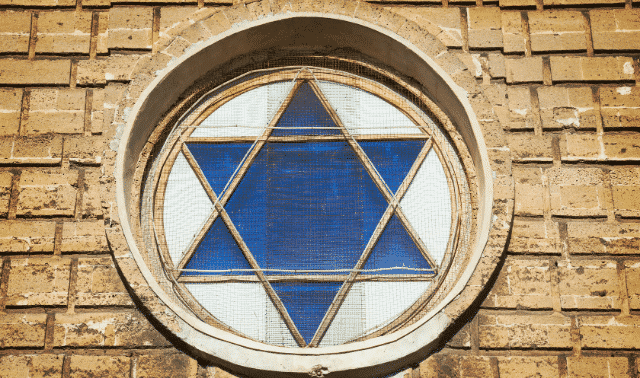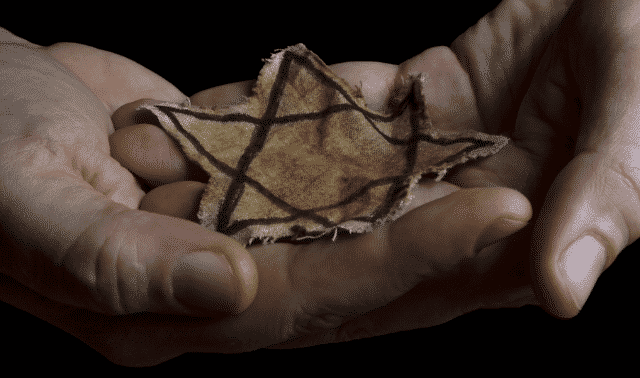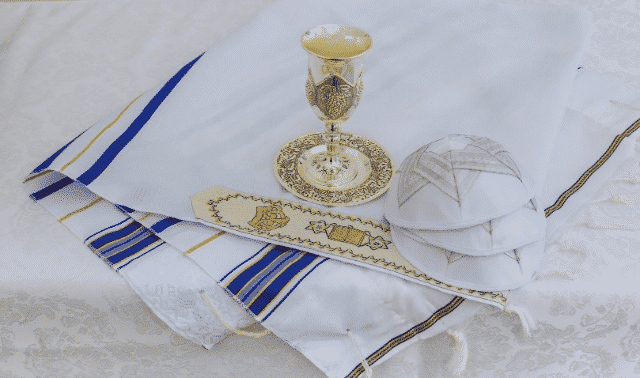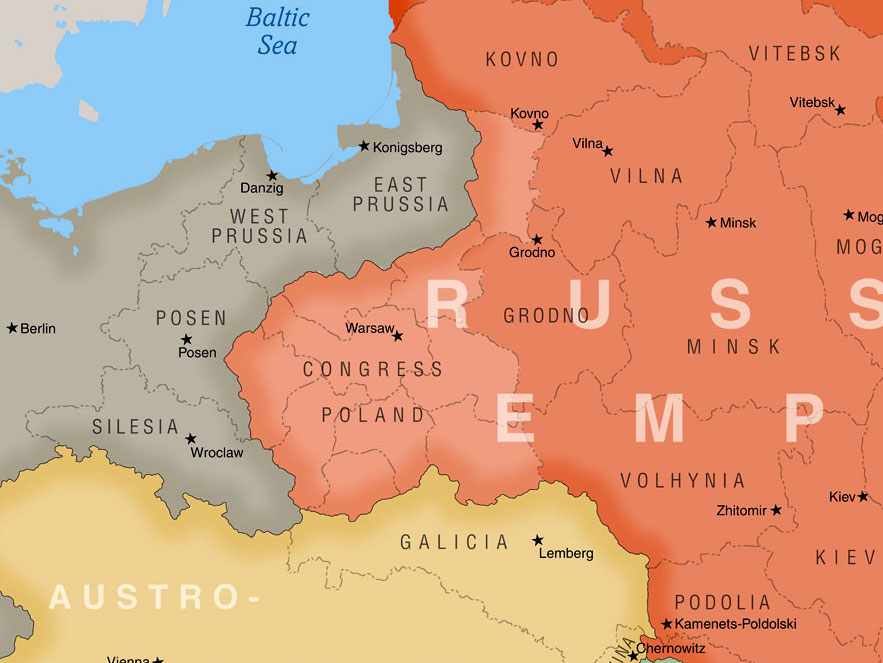Sign up for the Family Tree Newsletter Plus, you’ll receive our 10 Essential Genealogy Research Forms PDF as a special thank you!
Get Your Free Genealogy Forms
"*" indicates required fields
Until recent decades, many Jews believed it wasn’t possible to trace their heritage. Centuries of persecution, repression and sanctioned violence against Jews—culminating in the atrocities of the Holocaust—led people to assume that records of those persecuted would be equally battered or lost.
Today, however, vast Jewish archives, datasets and hard-earned expertise show otherwise. Tracing Jewish roots is both possible and, say Jewish genealogists, deeply rewarding. Many discover, in addition to family facts, renewed appreciation for their Hebrew heritage. Follow our guide to start reclaiming your Jewish relatives.
First, brush up on your history
The first Jewish settlers of North American colonies arrived in the late 1600s by way of Brazil. These Sephardic Jews had been driven from their homes in Spain and Portugal in the 1490s. Many found refuge in Holland and later joined Dutch colonists in Brazil. When the Dutch were driven out in 1654, the Jewish colonists came to New Amsterdam.
More Jewish families trickled in from Holland to Newport, RI, as early as 1658. Eventually small groups of Jews, mostly Sephardic, lived in colonial Newport; Charleston, SC; Savannah, Ga.; Richmond, Va.; and Philadelphia. Many assimilated with Protestant neighbors in manner and dress, but preserved their religious identity.
Large-scale immigration of Ashkenazi Jews (German and Eastern European) began in the 1800s. An estimated 200,000 came from Germany, particularly Bavaria and Bohemia; others came from Hungary. Many made a living as merchants, embraced the Reform tradition and built communities in Cincinnati, Chicago, St. Louis, Cleveland, Louisville and other inland cities.
Between 1880 and 1925, nearly 2.4 million Jews, mostly Ashkenazim from Poland, Russia and Slavic regions, fled persecution to the United States. Many spoke Yiddish, practiced Orthodox Judaism (including Hasidism) and settled in urban enclaves such as Manhattan’s Lower East Side. By 1927, about 80 percent of US Jews were Eastern European and Orthodox.
Mass immigration stopped with quotas passed in 1921. The Jewish population generally remained in cities and achieved financial security and professional success within a couple of generations. Yiddish speaking and religious identity declined. By 1935, less than 30 percent of young Jewish adults attended synagogue.
During the Hitler era, Jews were still largely barred from filling immigration quotas. Later, between 1947 and 1951, about 120,000 Jews—mostly Holocaust survivors—came to the United States; about half under the Displaced Persons Act of 1949. Anti-Semitism, Zionism, the Holocaust and the establishment of Israel in 1947 unified many American Jews and renewed their cultural and religious identity.
In the latter 1900s, Cuban, Israeli and ex-Soviet Jews arrived along with Mizrahi (or “Oriental”) Jews from the Middle East, North Africa and the Caucasus. At time of publication, more than 6.5 million Americans are of Jewish descent or conversion. About half belong to a synagogue; of these, about 40 percent follow the Reform tradition; 33 percent, Conservative; and 21 percent, Orthodox.
Records available on JewishGen.org
Your first stop for Jewish genealogy research should be the free resources at JewishGen.org, a non-profit organization affiliated with the Museum of Jewish Heritage. You’ll find records databases and indexes (they’re also searchable free on Ancestry.com) research instruction, records indexes, message boards, SIGs (special interest groups) for geographic areas, and handy tools such as a Jewish calendar date converter.
Synagogue Records: Determine synagogue from family records, city directories or annual directories of synagogues. Contact office for records or, if defunct, Jewish archives or the Family History Library.
Geographical finding aids: Use to locate long-lost (or renamed) ancestral hometowns abroad. Where Once We Walked indexes more than 23,500 central and eastern European towns. JewishGen offers databases where you can find info on thousands of communities in Europe, Africa and the Middle East.
Landsmanshaft records: Search Jewish archives for records of these societies of Jews from the same shtetl. Search archives’ catalogs and websites such as JewishGen’s and the New York Public Library for Yizkor books.
Holocaust Sources: Some wartime records kept by Nazis still exist, as do extensive postwar files, databases and other documentation. Jewish archives, Yad Vashem and the International Tracing Service are your starting point.
Discover more details on Jewish ancestors by diving into these resources:
Synagogue records
These include births, circumcisions, bar/bat mitzvahs, marriages, deaths, membership, donors, congregational histories and meeting minutes. Congregations are administratively independent, and record-keeping and archiving varies. Ask about old records at the synagogue office or at Jewish archives (look for the closest archive, or one related to your ancestor’s tradition); and search the Family History Library (FHL) online catalog. Identify an ancestor’s synagogue through family memory, obituaries, burial records, donor receipts and similar records. Jewish genealogical or historical societies can refer you to annual directories of synagogues. City directories also may be helpful, particularly in a one-synagogue town. In Europe, especially before 1850, you’ll consult records of other churches, which often served as the de facto vital record keepers before civil registration.
Cemetery records
Most Jews were buried in Jewish cemeteries or in Jewish sections of city cemeteries. Contact cemetery or synagogue offices for burial records, or look for Jewish burial societies through landsmanshaft records. Look to death records or obituaries for cemetery names. No luck? Ask local researchers or consult the International Jewish Cemetery Project. At the same URL, you’ll find JewishGen’s Worldwide Burial Register, which catalogs individual burials. For a guide to Hebrew tombstone inscriptions and Jewish burial customs, turn to A Field Guide to Visiting a Jewish Cemetery by Rabbi Joshua L. Segal (Jewish Cemetery Publishing).
Immigration records
Passenger lists from Hamburg, the departure point for many US-bound Jews, record the emigrations of nearly a million Jews before 1915. (The lists weren’t kept during World War I.) Ancestry.com has these lists for 1850 to 1934.
You can search US arrivals in Ancestry.com’s immigration collection. Passenger lists for New York, Jews’ most common entry point, are free at EllisIsland.org. Steve Morse’s One-Step Gold Form lets you search the data using the Daitch-Mokotoff Soundex system, which works better than American Soundex for finding variants of Eastern European names.
Resources for locating your ancestors’ shtetl
Locating your ancestors’ European hometown, or shtetl, may take some effort, because the town may have suffered destruction, changed names or “moved” due to shifting national borders. First, try to identify the village using passenger lists, naturalization records, death or burial records, obituaries or family memory.
Then look for villages (and alternate spellings) in Europe, the Middle East and North Africa in history and genealogical resources and in JewishGen’s Communities Database. Also consult the revised Where Once We Walked: A Guide to the Jewish Communities Destroyed in the Holocaust by Gary Mokotoff and Sallyann Amdur Sack with Alexander Sharon (Avotaynu) for information and a phonetic index on more than 23,500 central and eastern European towns.
Landsmanshaft records
Jewish immigrants from the same town would often form aid societies called landsmanshaftn. Most groups are defunct now, members having passed away, but you may find membership records and burial plot information. The YIVO Institute for Jewish Research, which focuses on Ashkenazi Jews, has records for more than 1,400 collections of landsmanshaftn records. The American Jewish Historical Society has many as well; consult its online manuscript catalog. You can also Google your ancestral village and the term “landsmanshaft.”
Yizkor books
Landsmanshaftn often published yizkor books to memorialize their villages. The tiniest shtetl may have a yizkor book packed with historical information, photos, maps, reminiscences and lists of Holocaust victims. Look for these at Jewish archives and libraries with Jewish collections. You’ll find English translations of many yizkor books online (with a master name index); the New York Public Library has 700 books online.
Holocaust records
These begin with deportation lists from France, Belgium and the Netherlands, and Nazi labor camp records of prisoner transportation, prisoners not immediately killed, and some deaths or executions (not mass killings). Postwar records include victims’ lists, International Tracing Service files on Holocaust victims and Pages of Testimony and other documents at the international Holocaust center Yad Vashem. The US Holocaust Memorial Museum has a survivors’ database; JewishGen.org has several databases, as well as a descendants registry. The Avotaynu Guide to Jewish Genealogy offers excellent tips for working with Holocaust records.
Family histories and surname registries
Other people’s research, while not definitive, can be a good jumping-off point for yours. Look for your family name among the 10,000 referenced in Sourcebook for Jewish Genealogies and Family Histories by David Zubatsky and Irwin Berent (Avotaynu). Check the Consolidated Jewish Surname Index, which phonetically indexes nearly 700,000 surnames from more than 40 databases, and FamilySearch’s Knowles Collection of family trees. Finally, consult JewishGen’s Family Tree of the Jewish People and Family Finder (which connects researchers interested in the same surnames and towns).
Consult guides for expert help, particularly when using foreign records: Avotaynu Guide to Jewish Genealogy edited by Sallyann Amdur Sack and Gary Mokotoff (Avotaynu), and Discovering Your Jewish Ancestors by Barbara Krasner-Khait (Heritage Quest) are two of the best. The Ackman & Ziff Family Genealogy Institute in New York City, the Dorot Jewish Division of the New York Public Library, and the American Jewish Archives all offer research support. Look to state and local Jewish genealogical societies, too.
A version of this article appeared in the May/June 2012 issue of Family Tree Magazine. Last updated, May 2023
Related Reads
ADVERTISEMENT

